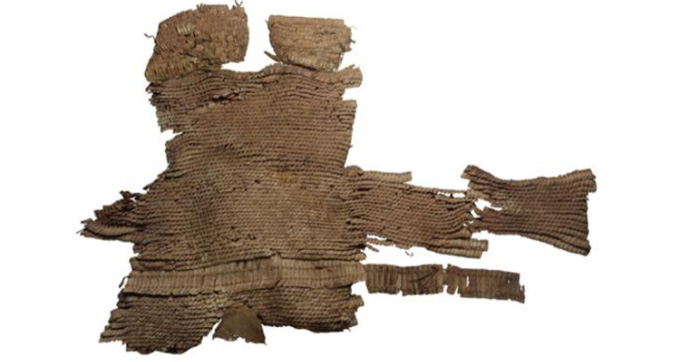Leather armor dating back approximately 2,700 years was used by knights to protect their bodies without restricting movement.
Experts at the University of Zurich are studying a unique set of leather scale armor discovered in the tomb of a 30-year-old knight in the Yanghai cemetery near the city of Turpan, Northwestern China, ScienceDaily reported on December 8. The design and manufacturing details indicate that it originated from the Neo-Assyrian Empire between the 6th and 8th centuries BCE and was later brought to China.

Assyrian leather armor found in Yanghai, China, dating from 786 to 543 BCE. (Photo: D. L. Xu/P. Wertmann/M. Yibulayinmu/Quaternary International).
Scientists discovered the nearly complete leather scale armor in 2013. This garment is an unprecedented find, having survived through millennia due to the extremely arid climate.
Scale armor helps protect vital areas of soldiers, acting like an additional layer of skin without hindering mobility. It is made from small shield-shaped plates arranged horizontally and sewn onto a lining.
The research team utilized carbon dating methods and determined that the armor dates from approximately 786 to 543 BCE. The garment is constructed from around 5,444 small scales, 140 large scales, leather cords, and weighs between 4 to 5 kg. It resembles a vest that protects the front of the torso, hips, sides, and waist. The wearer can don the armor quickly without assistance, and it fits individuals of various sizes.
Due to the expensive materials and intricate manufacturing process, these armors were highly valuable, and wearing them was initially considered a privilege of the elite. They were rarely buried with their owners. However, the emergence of powerful nations with large armies led to the development of less valuable but still effective armor made from leather, bronze, or iron for regular soldiers.
“Armor was produced professionally in large quantities,” said Patrick Wertmann, an expert at the Institute of Asian and Oriental Studies at the University of Zurich.
Chariots were increasingly used in Middle Eastern warfare, and a special type of armor for cavalry was developed in the 9th century BCE. These armors subsequently became standard equipment for the troops of the Neo-Assyrian Empire, which stretched from present-day Iraq to Iran, Syria, Turkey, and Egypt.
Although there is no direct connection to the armor found in Yanghai, a similarly dated armor of uncertain origin at the Metropolitan Museum of Art (Met) in New York shares some stylistic and functional similarities. They may have been used as uniforms for different units of the same army, such as the Yanghai armor for cavalry and the Met armor for infantry.
According to scientists, the Yanghai armor may have belonged to a foreign soldier serving in the Assyrian army, who brought it back to his homeland, or it could have belonged to someone else who had traveled to this region. “While we cannot trace the exact journey of the scale armor from Assyria to Northwestern China, it remains one of the rare pieces of evidence of the West-East technological transfer across the Eurasian continent in the 1st millennium BCE,” Wertmann stated.


















































